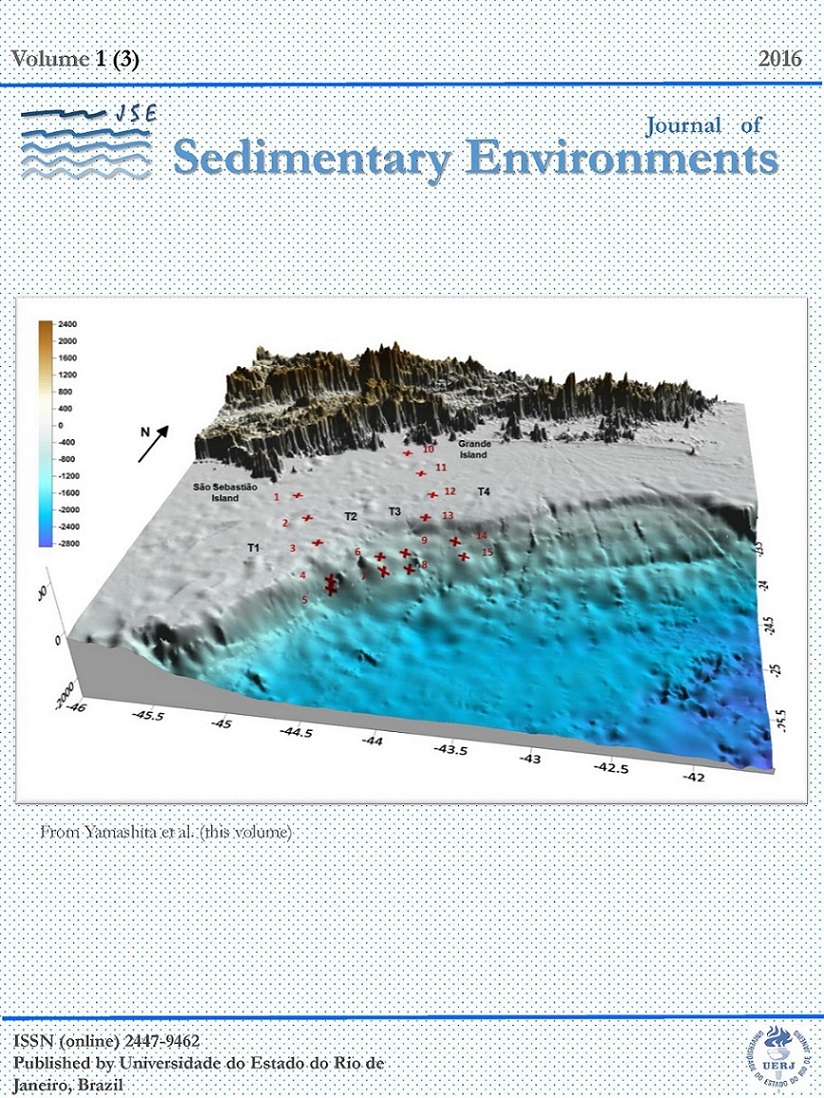ECOLOGICAL STATUS EVALUATION OF ITAIPU LAGOON (NITERÓI) BASED ON BIOCHEMICAL COMPOSITION OF ORGANIC MATTER
DOI:
https://doi.org/10.12957/jse.2016.25903Keywords:
Organic matter, Biopolymers, Anthropic impact, Coastal lagoonAbstract
The variety of approaches for assessing the trophic environmental state indicates that there is a strong need for the identification of new and possibly integrated ecological descriptors in coastal marine areas. These approaches would be able to capture relevant variables associated with the eutrophication process, and would be reliable, applicable and valid worldwide. The main objective of this study was to provide evidence that the quantity of total organic carbon (TOC), total sulfur (TS) and biopolymeric carbon (BPC) are useful proxies to evaluate the benthic trophic status in transitional marine environments. Sediment samples collected in Itaipu Lagoon, a Brazilian coastal system of the State of Rio de Janeiro were analyzed in this study. Geochemical data such TOC, TS and BPC concentrations, including proteins (PTN), carbohydrates (CHO) and lipids (LIP), are combined with additional environmental parameters of the bottom water measured in in Itaipu Lagoon. The analysis of quantity and quality of organic matter (OM) allowed the identification of three distinct regions in Itaipu Lagoon: an inner and impacted zone characterized by sediment particularly enriched in TOC, with lower quality of OM most probably provided by the contaminated effluents and rivers runoff; an outer-less impacted lagoonal area with relatively low TOC content where the highest values of BPC/TOC and PTN/TOC are indicative of the presence of OM with high nutritional quality and; an intermediate area characterized by transitional features between the two previously described. The organic matter accumulation depends of the hydrodynamic conditions mostly governed by tidal currents. The quality of organic matter seems to be mainly influenced by municipal effluents, rivers inputs and mangroves contributions as well as by the autochthonous lagoonal biological productivity. Results of this work indicate that the inner zone of Itaipu Lagoon is being affected by eutrophication.
Downloads
Published
Issue
Section
License

Journal of Sedimentary Environments (JSE) is licensed under a Creative Commons Attribution-Noncommercial-Share Alike 4.0 International License.

